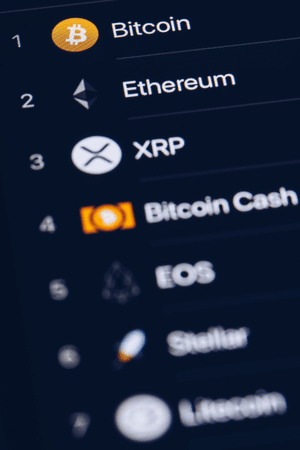Investing in a crypto fund
A crypto fund is an investment fund that uses cryptocurrencies . Crypto funds are also known as cryptocurrency investment funds. This makes it possible to invest in different crypto assets at the same time. Not only regular crypto currencies such as Litecoin, Monera and Bitcoin, but also blockchain platform tokens and security tokens can be included. Think of Eos, Tron and Neo. Which ones are added to the fund depends on the structure, investment strategy and structure of a specific crypto fund.
What does a crypto fund do?
A crypto investment fund functions in much the same way as a regular investment fund. It is mainly concerned with enabling passive investments for institutional investors, but also for private investors in the cryptocurrency markets. Because the fund is registered with the Chamber of Commerce, it can collect the contributions of a certain number of investors. In order to be able to contribute, a minimum investment is required. Once the amount has been deposited, the crypto fund team will invest the collected fund capital. It is invested in various crypto assets, taking into account the matching investment strategy of the fund and the structure.
When you participate in a crypto fund, you will receive participations for this. The amount of these participations depends on the amount that has been invested. In addition, the assets that the fund has built up and the price are taken into account. Returns are often achieved through a distributed dividend . A distributed dividend means the profit distribution from which the return fee has been deducted. Each crypto fund charges a different management fee by the fund managers. A possible situation is, for example, a commission of 16% on the positive return per quarter and the management fee that amounts to 0.5% per quarter.
When is a good time to get into a crypto fund?
To explain and justify this, the bear and bull markets are used. Both have their advantages and disadvantages, so pay attention to this when you decide to trade during one of the two.
During a bear market, the best time to participate in a crypto investment fund is. At this time, the market sentiment is wait-and-see, but it can also be negative. In addition, it concerns small trading volumes and private investors are about to sell too quickly on bad news. A bear market makes it possible for a crypto fund to invest in the best crypto assets of excellent projects for a favorable amount.
During a bull market , on the other hand, a large return can be obtained. Moreover, the dividends paid out will often make all participants enthusiastic and can serve as a buffer for less good times in the future. The disadvantage of getting in as an investor during a bull market is that certain disadvantages can become difficult. There is a chance that a participant will get out prematurely with a loss during a next bear market. During a bear market, it is often the case that a crypto fund goes through a kind of acid test. An excellent investment strategy and communication with the participating members are very important in this.

What are the disadvantages that a crypto fund can bring?
An important point to consider with a crypto investment fund is that during a bear market the risk of loss is very high. In such a situation a management fee can be quite expensive. This is a scenario that is often not thought of at first, because a favorable return is achieved when a crypto fund is doing well. In such a situation a management fee is not yet a big problem.

If someone were to enter late during a bull market, this could be very disadvantageous. If a crypto fund is selected without management costs and only a return fee, this problem will not occur. However, it is important to take into account the fact that every crypto fund has a specific design and strategy. Therefore, it is strongly recommended to choose a crypto fund that appeals to one’s own risk profile and needs. In addition, it is important that there is a transparent organization and a strong team. This team must be accessible via excellent communication lines to participating members. It is important that one can be stronger together.
Participating or investing in a certain crypto fund can entail many risks. In addition, a crypto fund cannot be regulated. In this case, there is no supervision by the AFM on participation. Furthermore, there is no prospectus or licensing obligation.
Compare brokers and start investing in mutual funds
After reading this article about crypto investment funds, are you excited about investing in investment funds? Check out the range of brokers that offer investment funds and find the broker that suits you best! Do you prefer to invest directly in cryptocurrencies? Then compare all brokers that offer cryptos !